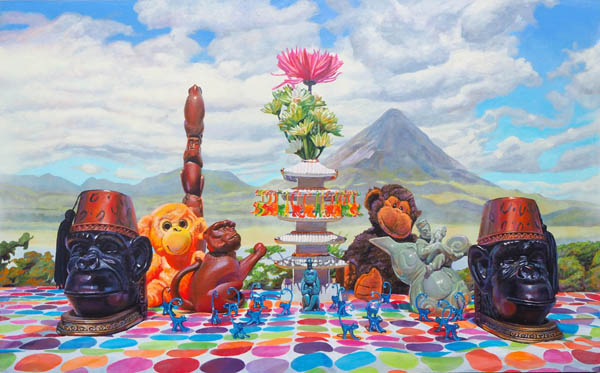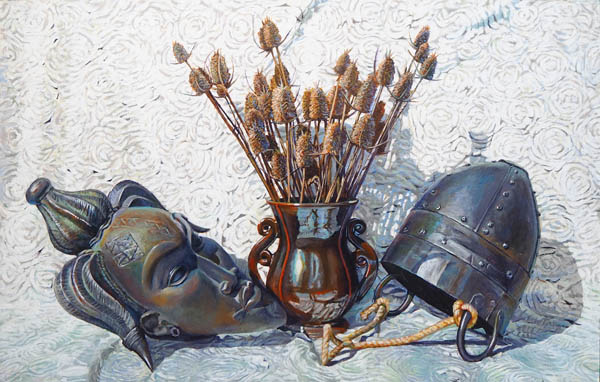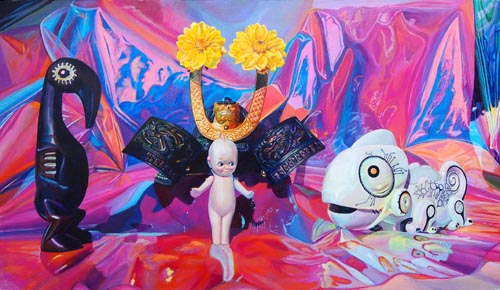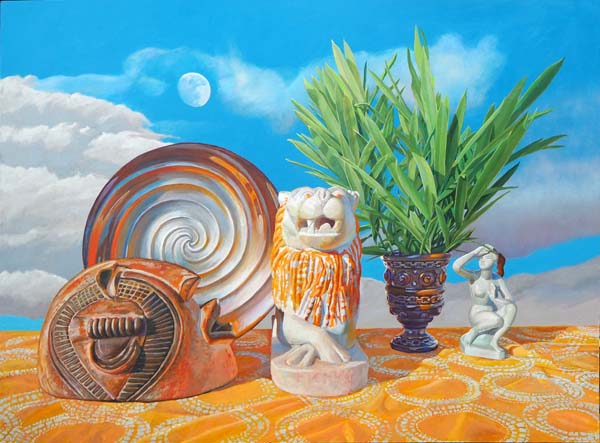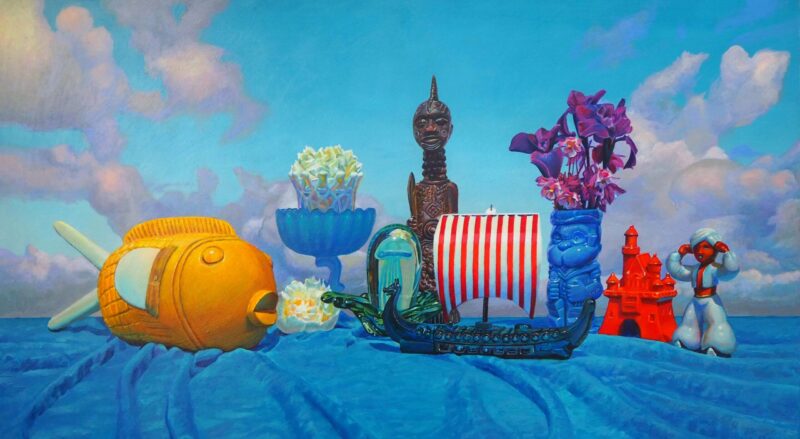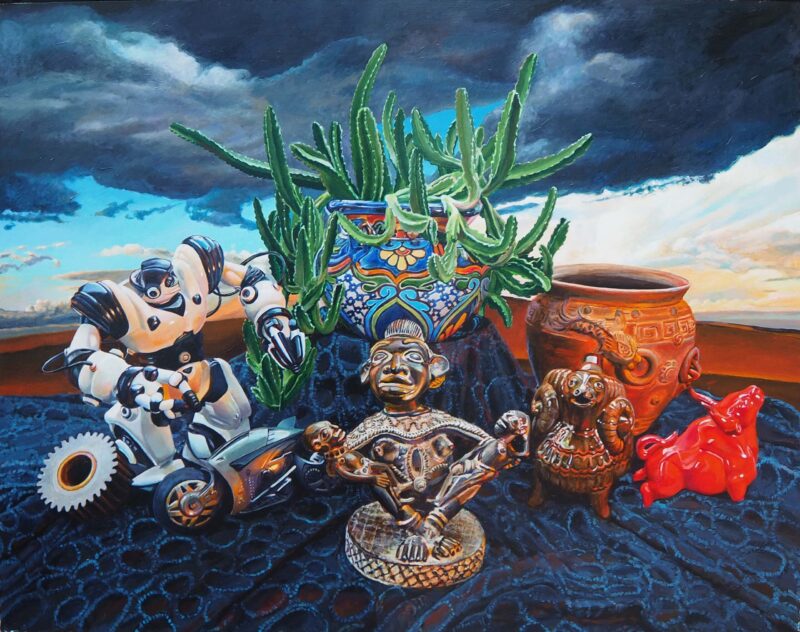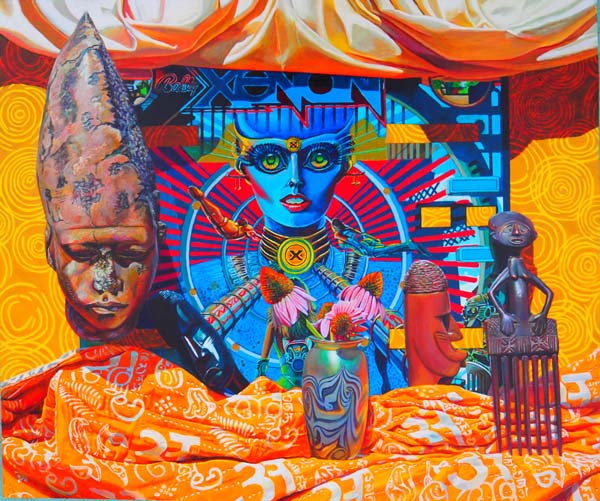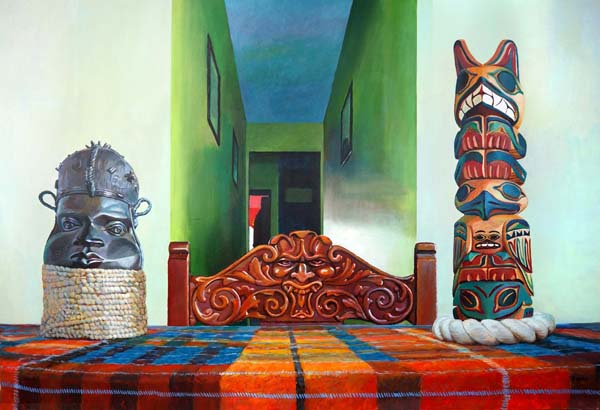They appear to be traditional still lifes on first glance. There are fruits, flowers and recognizable objects rendered in a photorealistic style. On closer examination, one notices that items have been assembled from array of cultures, utilities and time periods. Each work is inspired by a mythical archetypal theme underlying multiple stories from across the world. As these archetypal themes transcend time and cultures, it could be that they are hardwired into our DNA. These works form familiar, but untold myths, for which the viewer is roused to imagine their own story.
Art emerged from myths. The gods, stories and legends from ancient communities were depicted by primitive paintings and sculpture, making the unseen real. Mythical and spiritual subject matter has been a primary concern for art for most of history. But visual art in particular has found other aims, leaving myths behind for the most part.
I search for items with strong associations and symbolic power to express each mythical theme. I intentionally draw from many sources, from toys to tribal artifacts, art to advertising, past and future. The works have many tensions as a result – disparate objects and cultures, bold dissonant colors, varied textures and settings. It is also paradoxical to present mythical subjects in a photorealistic style. To hold these tensions together, I often use simple compositions that can resemble shrines. I find natural elements, such as flowers and landscape, help to diffuse the power of the objects.
Myths relate the natural world to hidden worlds, so I often incorporate veils, glass and curtains into the paintings. Myths often explain phenomena in the universe, sometimes with magic. So, I sometimes incorporate elements that defy physics. I am also inspired pictorial storytelling that dates back to prehistoric cave paintings and panels from the ancient world (Assyrian, Egyptian and Hindu).
I believe civilization suffers from a deficiency of myth, and which makes Mythos Morte relevant. Joseph Campbell, author of the Masks of God, argued that science spent to last few hundred years dispelling myths, and observed a modern hunger for them more than 30 years ago. And it has only grown since them. It is evident in the fantasy movies we watch (i.e., Avengers, Avatar), the games we play (i.e., Warcraft), and even in the wild conspiracies that plague social media and our politics. Severing our connection with myth has driven people to seek fantasy to satisfy that need, or act out against science and factual information.
Science has successfully displaced myths in technologically advanced societies. Myth is a product of the imagination, while Science was birthed from observation. Yet there are cracks. New technological breakthroughs require imagination, just like myths, and that has lessened its hold on how people understand the world. Anyone can experience gravity in an apple falling from a tree, but this is not true of black holes and proving that they exist. One can master video gaming and social media without having the slightest idea of how they work.
Together, the paintings display a universal human experience by expressing ideas, themes, narratives and archetypes that recur across time and cultures. These archetypes persist because they reflect fundamental aspects of human psychology and our relationship with the world. The work makes the case that, beneath the surface, our stories are interconnected.
